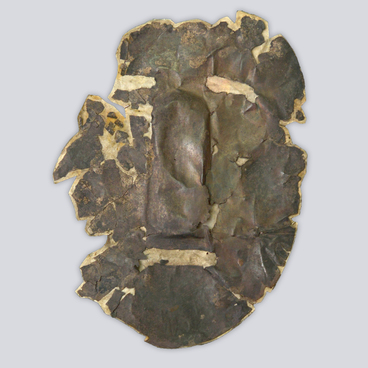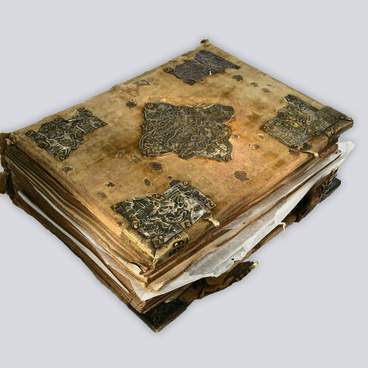The exhibited dagger was discovered during investigations at the burial site near the village of Ananyino, the Yelabuga District, in 1880-1881. Scientists identified that it belongs to the Ananyino archeological culture.
Dagger
Creation period
8th – 3rd centuries B.C.
Dimensions
26,6x5,25 cm
26.6х5.25х0.68 cm
26.6х5.25х0.68 cm
Technique
Bronze, casting
Exhibition
2
Open in app#1
Dagger
#3
#4
This culture was spread in the Middle Volga area and in the Kama river basin. Ananyino tribes used to inhabit river banks, headlands, along the edges of low and high terraces. They build settlements, craftsmen villages, sanctuaries and temporary nomadic encampments.
They were mostly engaged in livestock raising, as well as in hunting and fishing. The Ananyino tribes practiced ferrous and non-ferrous metallurgy, bronze casting and blacksmithing. They were also engaged in weaving and spinning, leather and bone processing, crockery making.
#2
The Ananyino tribes used both bronze and iron tools. Most of the tools were decorated either with zoomorphic ornaments made of either images of dragons and various animal heads, or of geometric patterns of zigzags, circles and spirals.
#7
Among the burial artefacts, archeologists also found various items of arms: Scythian-type socketed arrowheads and spearheads, battleaxes and hatchets, swords and daggers.
#6
The exhibited dagger was made of bronze by way of one-piece casting and has two blades. Scientists believe that it was part of hunting arms and was worn in a belt leather case.
#8
The artefact was discovered by archeologist Pyotr Ponomaryov. He was a founding member of the Society of Archeology, History and Ethnography at the Imperial University of Kazan and took an active part in its research work. Ponomaryov was engaged in archeological excavations for over 40 years and was reckoned to be knowledgeable of antiquities of the Volga and Kama region. His investigations of Ananyino and Malasheyevo burial sites were a substantial contribution to the development of historical studies.
#9
In addition to weapons, archeologists found in Ananyino burial a drawing of a warrior, preserved on a tombstone. The warrior is pictured wearing a short coat, breeches and a high-top hat. At his belt, the warrior had a short sword, a dagger and a spike hammer: a weapon with a nose in the form of a sharp beak.
#10
The National Museum of the Republic of Tatarstan
read morehide
00:00
00:00
1x
Dagger
Creation period
8th – 3rd centuries B.C.
Dimensions
26,6x5,25 cm
26.6х5.25х0.68 cm
26.6х5.25х0.68 cm
Technique
Bronze, casting
Exhibition
2
Open in app
Share



